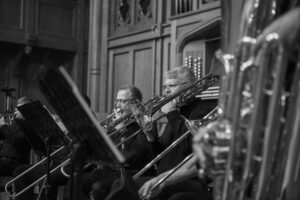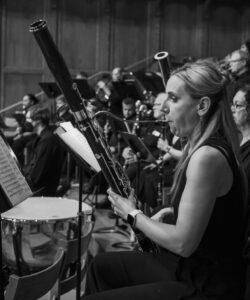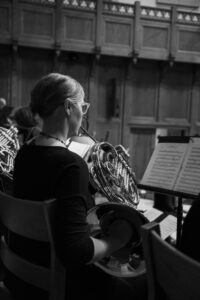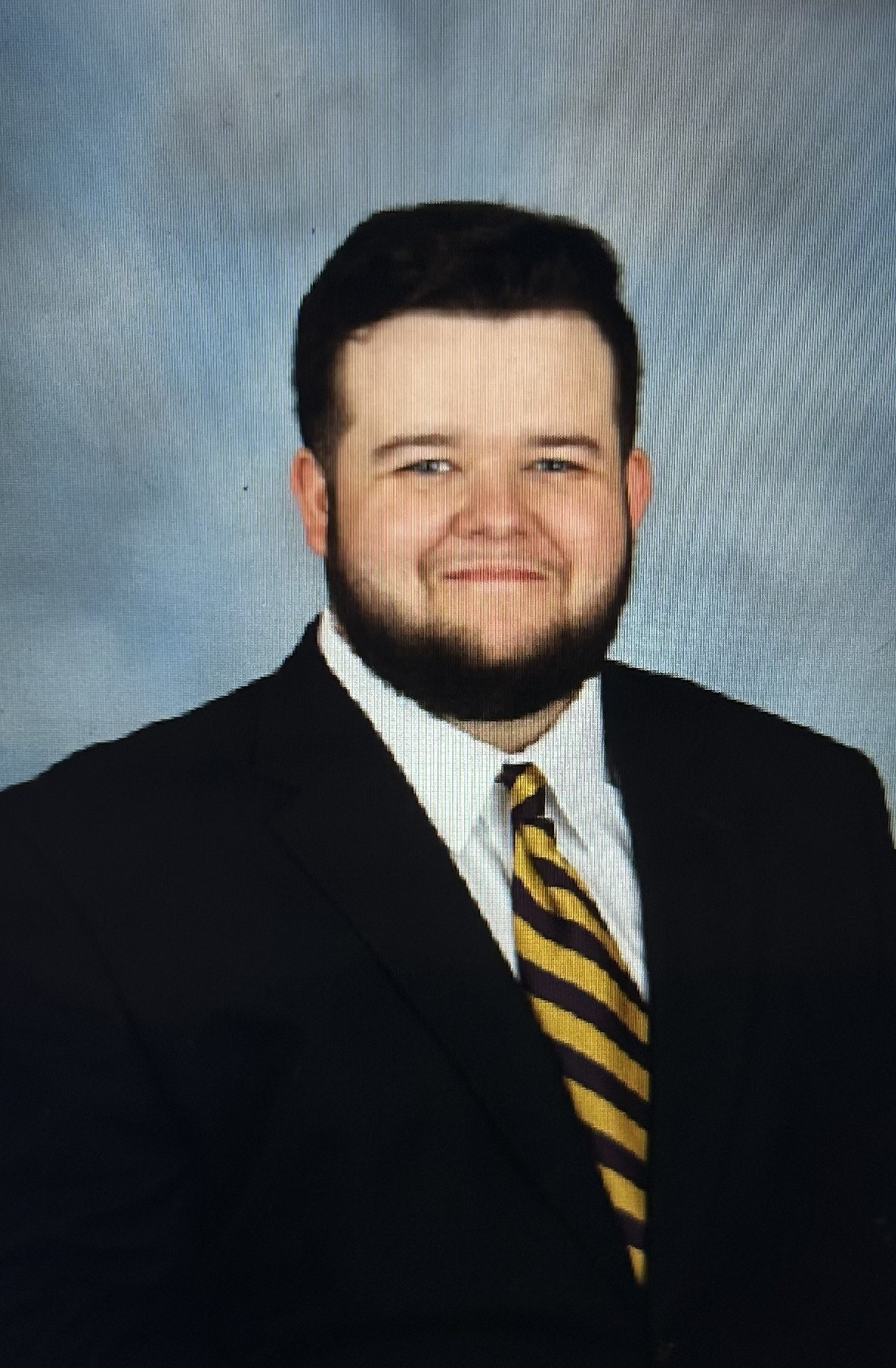The NPO’s ‘American Legends and Brahms’

The Nashville Philharmonic recently wrapped up their spectacular opening to the 2024-2025 season. The program, titled “American Legends and Brahms” was an excellent featuring works by Aaron Copland, Joan Tower, Jennifer Higdon and of course, Johannes Brahms. This concert was a combination of exciting well-known material and an introduction to some lesser known works by American composers. Overall, the concert was engaging, powerful and exciting to witness.
The Nashville Philharmonic Orchestra opened the concert with one of Copland’s most known pieces, Fanfare for the Common Man. Written as a part of a collection of fanfares written for the Cincinnati Symphony Orchestra in 1942, the piece was named after a line from a speech delivered by the current Vice President of the time, Henry A. Wallace. Wallace said it was the dawning of “The Century of the Common Man” in his speech leading to the inspiration for Copland. This fanfare is simple, triumphant, and quite in your face at times. Composed solely for brass and percussion it was interesting to see an orchestra concert open without strings. The brass section lived up to the call and really showed off for this piece. The horns especially were loud and proud throughout. I was not expecting the orchestra to perform to this level, and it shook me in my seat.

Following the Copland selection, the orchestra played a piece by a true innovator for American composers, Joan Tower, whose work was influenced by Copland’s fanfare. Tower is a legendary figure in American composition. She was the first woman to win the prestigious Golden Baton awarded by the League of American Orchestras. They played Tower’s Sixth Fanfare for the Uncommon Woman which is the final installation in the collection of Fanfares for the Uncommon Woman. While all are directly influenced by Copland’s fanfare, the first one kept the original instrumentation with small additions in the percussion section. Originally the sixth fanfare was written for piano in 2014 but was orchestrated for a full orchestra in 2016. Tower dedicated this fanfare to Cuban American composer Tania Leon. The sixth stands as the longest of these fanfares and it was a welcome contrast to the shorter Copland fanfare. The orchestra must have loved this piece judging by the intensity by which they performed it. The almost never ceasing motor that changes voices kept the piece progressing and interesting. As one group took the motor another would play the melody or in many cases the melody would be built into the ostinato. You never knew which was going to come next, keeping the listeners engaged and working to unravel the communication between sections.
After the two fanfares we were presented with a much different piece by another modern composer, Grammy winner, and world-renowned composer, Jennifer Higdon. Blue Cathedral was commissioned as a celebration for the Curtis School of Music’s seventy-fifth anniversary. Conductor Christopher Norton talked about how this piece became something a lot more personal for Higdon as her brother, Andrew Blue Higdon, tragically passed away fighting cancer while she was working on this piece. The piece features the flute, which Higdon plays, and the clarinet, which her brother played. Throughout the piece the two instruments trade solos almost as if they are communicating with each other as Higdon and her brother did growing up. A slower and very powerful piece, the solemn music resonated through the hall as we were taken on this mournful journey. Though, as Higdon has said in interviews, the piece ended up being more cheerful than melancholy. The piece ultimately reflects Higdon working through the stages of grief while mourning the loss of her brother; the orchestra portrayed these emotions with extreme care and prestige. Several members of the audience were moved to tears, bravo!

To end the concert, the Nashville Philharmonic brought out Brahms’ First Symphony in C minor. A true masterpiece in the genre, it was composed over 20 years between1855 and 1876 and finally debuted far into Brahms career. The first movement is in the standard sonata form but what makes it unique is it has an introduction before the exposition. The introduction features the use of bizarre syncopations for the time and pizzicato strings over the timpani which is keeping the pulse. The exposition begins abruptly and brings in a new high energy theme that carries throughout the movement.
After the introduction things get a lot more Beethovenian (Brahms just turned over in his grave as I wrote this) as it continues throughout a standard symphonic form. The second movement is much slower which is to be expected, what is unexpected is it is in E major. Other than that, it remains pretty standard in a ternary form and a lyrical melody. It was very nice hearing the theme flow from bassoon to high strings to a soaring oboe. As the melody changed color between instruments so did the feeling of the movement as if there was a conversation between them similar to the Higdon piece. To end the movement the piece is restated in the Horns adding yet another tone color to the collection for this movement. The third movement is the expected dance style that became commonplace in the symphony. This one is made up of an allegretto in 2/4 and a contrasting trio in 6/8 also following a ternary form like the second movement. The only difference is the return of the A section functions more as a modified A section with lingering themes and effects from the trio.
The final movement to me was the most Beethoven of the four. It resolves leftover themes and tensions from the first movement with the transition into cut time and the presence of flaring themes in the strings. What was of note to me was the blaring strength of the bass trombone during this final movement. It was a much-needed effect that elevated this performance of the symphony from recordings I listened to before the concert. A small detail but a much appreciated one. The entire symphony was illustrious to say the least and was truly an honor to witness live.
The entire performance was far beyond anything I expected from the Nashville Philharmonic. All these musicians are top notch and perform greater than anything I wanted from a volunteer orchestra. If this is what I can expect for the rest of the season I am very excited to return for the next concerts. Everything was masterfully put together and executed on the concert and was fantastic to witness. Bravo Nashville Philharmonic Orchestra.
The NPO returns on December 15th and 17th and is currently accepting applications from composers and performers for their annual concerto and composition competition.



